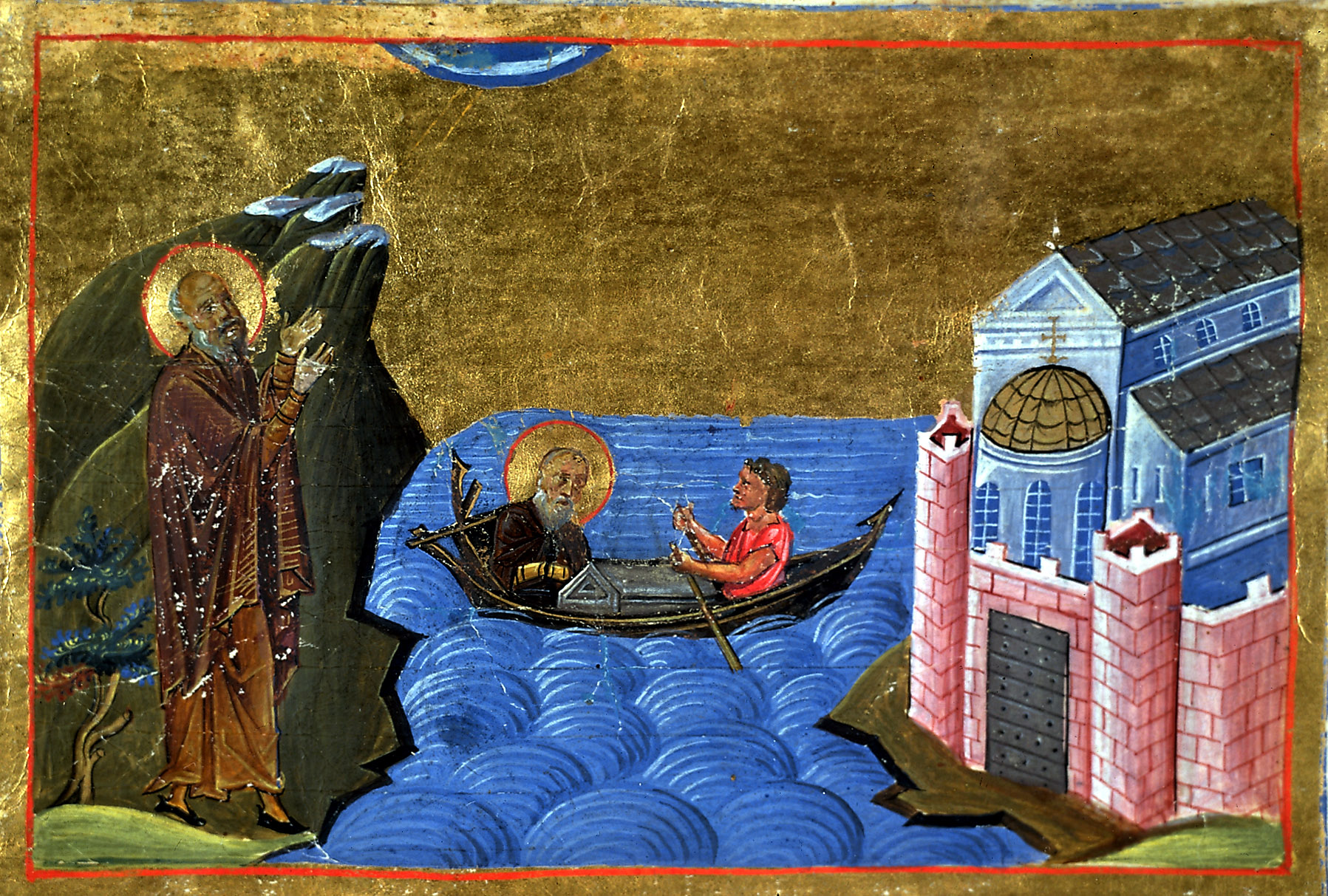Most Holy Theotokos, save us! Happy feast day to any one attached to the Julian calendar. Today I noticed this passage from the Matins in the second sedalion:
Even before thy conception thou wast consecrated to God, O pure one, and, having been born on earth, thou hast now been offered to Him as a gift.
The Church Slavonic text is:
Пре́жде зача́тия, Чи́стая, освяти́лася еси́ Бо́гу/ и, ро́ждшися на земли́, дар принесла́ся еси́ ны́не Ему́,/ исполня́ющи оте́ческое обеща́ние.
I'll eventually get to more obvious and straight forward passages that deal with Mary's immaculate existence from the moment of her conseption but this passage is no less interesting.
The English translation is fine but the word "consecrated" doesn't really translate the word "освятилася" fully, so I'd translate it like this: "Before thy conception, O pure one, thou wast sanctified unto God". Yes, it is almost the same thing but the word consecrated in modern English gives the impression that it simply refers to the fact that God chose or set her aside before all ages (which is also true). The Greek word used is καθηγιάσθης, which is from the same root as καθαγιάζω. Now, the word for sanctification is ἁγιασμός, which is the same root as ἅγιος, i.e. holy. The English "consecration" really connotes making something sacred The word καθαγιάζω is used twice in the Bible. 2 Maccabees 1:26 reads: "Receive the sacrifice for all thy people Israel, and preserve thy own portion, and sanctify it.". The Vulgate translates sanctify as 'sanctifica' from the verb 'sanctifico', i.e. to make holy. Russian Synodal Bible also reads 'sanctify' and in Church Slavonic - освяти - make it holy, sanctify it. Another mention is Leviticus 27:26, "The firstborn, which belong to the Lord, no man may sanctify and vow: whether it be bullock, or sheep, they are the Lord's". A lot of translations also have 'dedicated' or 'consecrated', and this brings us to the question of what dedication or consecration of something is. The use 'sanctify' makes it clear that this act means to making something saintly, holy or sacred and not just setting something or someone aside for something special, as the same canon lets us know, calling the Theotokos "sanctified treasure of the Lord".
Why am I writing all of this? No, I'm not trying to read the Immaculate conception into everything. At the same time, I am not trying to avoid it either (obviously). The phrase "Before thy conception... thou wast sanctified (consecrated)" reads differently if you pay close attention to both cannotations of those words. She was made holy before her conception and after she was born, offered to the Lord as a gift. Any stain on the animal being sacrificed makes it unfit: "If it have a blemish you shall not offer it, neither shall it be acceptable" and "The man that offereth a victim of peace offerings to the Lord... shall offer it without blemish, that it may be acceptable: there shall be no blemish in it". Thus, the same canon refers to her as "Pure and undefiled one" (ode 3) and "the unblemished ewe-lamb" (Glory: after sedalion), "unblemished heifer" (ode 5).
Is this not worshipping Mary? Well, this blog is not dedicated to polemics with the Protestants, so I am going to leave this question aside. However, it should be said that though Jesus is the ultimate sacrifice, in the Byzantine tradition we do not just ask Mary to pray for us, we ask the Mother of God to save us, because she is "the mediatress of salvation" (sedalion of the canon) and even more emphatically: "Thou art our glory and salvation" (Glory: after sedalion). Does any one think that Byzantines did not realize that Christ was the Saviour, not Theotokos? Yes they did but they also knew of the close connection between Christ's sacrifice and that of Mary: "Thou art the deliverance, thou art the joy of all, thou art our restoration, through whom the Uncontainable One shall appear unto me contained" (ode 5). Byzantine outlook is very hierarchical, that is why they had no problem with words that sound a bit excessive to a Western ear, which is especially clear (I think) in this passage from the canon:
O pure Theotokos, as thou hast the most radiant beauty of purity of soul and art full of the grace of God from heaven, with the ever-existent light thou dost ever enlighten those who cry out with joy: Truly thou art more highly exalted than all, O pure Virgin!
One should also notice how the canon says phrases such as: "Birthgiving which passeth understanding" or "Strange is thy birthgiving". What's so strange about it, given the fact that she was born like any other person? Well, I am not going to speculate about Mary's pre-purification but I do suspect that her birth and the following were related for the author of the canon:
Rejoice, O most immaculate Mother of God, by whom we have been delivered from the primal curse, coming to share in incorruption!
Anyhow, if you want to find some food for thought when pondering Mary's being the most-immaculate one, the one who became the new Eve by being without the primal curse, or even the controversial Co-Redemptrix, look no further than Byzantine hymnography.
Rejoice, O thou fulfillment of the Creator's dispensation!





